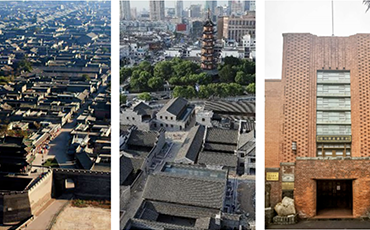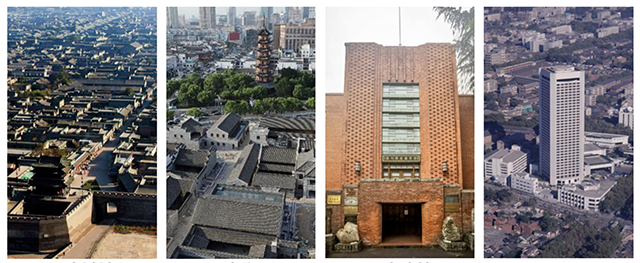


On November 3, 2021,the CPC Central Committee and The State Council will hold a grand National Science and Technology Award Conference in Beijing to commend a number of major scientific and technological achievements. At the conference, the Theory, Key Technology and Application of Multi-Scale Protection of Urban Architectural Heritage in China won the first prize of the National Science and Technology Progress Award, which is the first first prize of National science and Technology achievements in the field of architecture in China.
Urban architectural heritage mainly refers to the material and cultural heritage of human society with city-block-buildings and their historical environment as the complete carrier. It is the basic consensus of the United Nations and all countries in the world to strengthen the historical and cultural inheritance and the protection of architectural heritage. As of 2023, China has designated 446 national-level historical and cultural cities and towns (Source: National Cultural Heritage Administration, 2023) more than 1,000 historical blocks of various types, and more than 1 million immovable cultural relics and historical buildings, which together constitute the Multi-Scale urban architectural heritage of China.

Figure 1: Distribution of historic towns, blocks, and buildings in China (Source: National Cultural Heritage Administration, 2023).
Chinese civilization is the world’s only uninterrupted ancient civilization. Urban architectural heritage is one of the most important physical witnesses of Chinese civilization, and its protection and utilization are related to the identity of the Chinese nation. The 19th National Congress of the Communist Party of China proposed to "strengthen the protection and utilization of cultural relics and the protection and inheritance of cultural heritage", and took it as an important part of the work of "strengthening cultural self-confidence".
The project emphasizes the continuity, complexity, and diversity of urban architectural heritage across scales.In view of the key scientific problems of the separation of architectural heritage protection from urban planning and construction in the past, and the lack of integrity and Multi-Scale continuity in the conventional protection mode of zoning, classification and classification, relying on the key projects of the National Natural Science Foundation, the National Jieqing Project, the 12th Five-Year Science and Technology Support Plan and other national scientific research projects, through continuous cooperation and exploration, the following innovative achievements have been achieved:
·Revealed the internal mechanisms of multi-scale protection for urban architectural heritage.
·Established a theoretical framework for holistic conservation.
·Overcapped technical bottlenecks in multi-scale integration.
·Developed symbiotic design methods for historic and modern architecture.
The above achievements explain the integrity, compatibility and conductivity of Multi-Scale protection of urban architectural heritage from the aspects of theory, theory, method, technical standard and engineering practice, and have been applied in more than 300 projects related to Multi-Scale protection of urban architectural heritage carried out in 31 provincial-level administrative regions. It has formed a comprehensive system of theories and technologies for Multi-Scale protection of urban architectural heritage with independent intellectual property rights.
The project outcomes contributed to the successful inscription of two UNESCO World Heritage Sites, and have been applied to 16 national historical and cultural cities such as Beijing, 43 World cultural heritage and national key cultural relics protection units, 78 historical districts and 11 site protection construction projects, realizing a major leap in the protection of urban architectural heritage in China, and exemplifying the principle of "integrating research with practical applications." At the same time, the project results have also been applied to the protection of the heritage along the "Belt and Road" such as Myaogu City in Myanmar, which has achieved significant social, economic and environmental benefits and produced far-reaching domestic and foreign influences.
Editor & Translator:Jin He